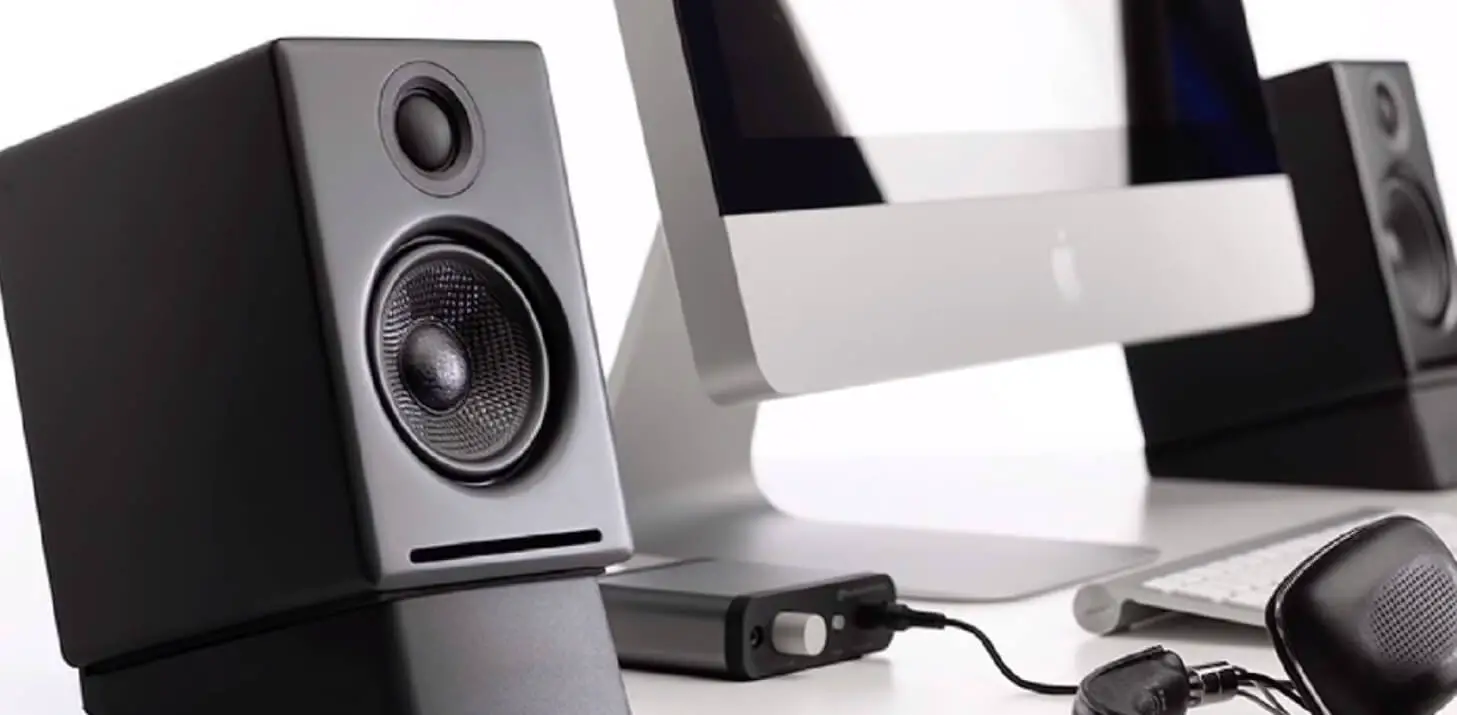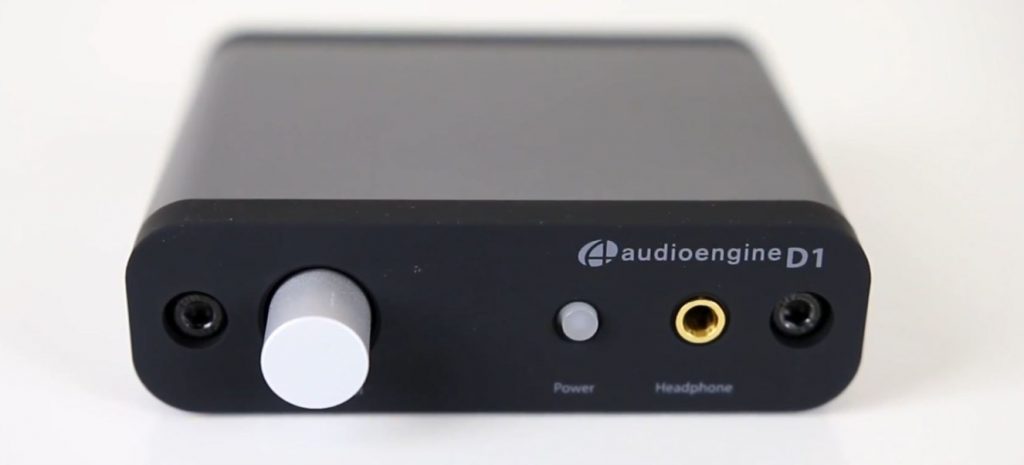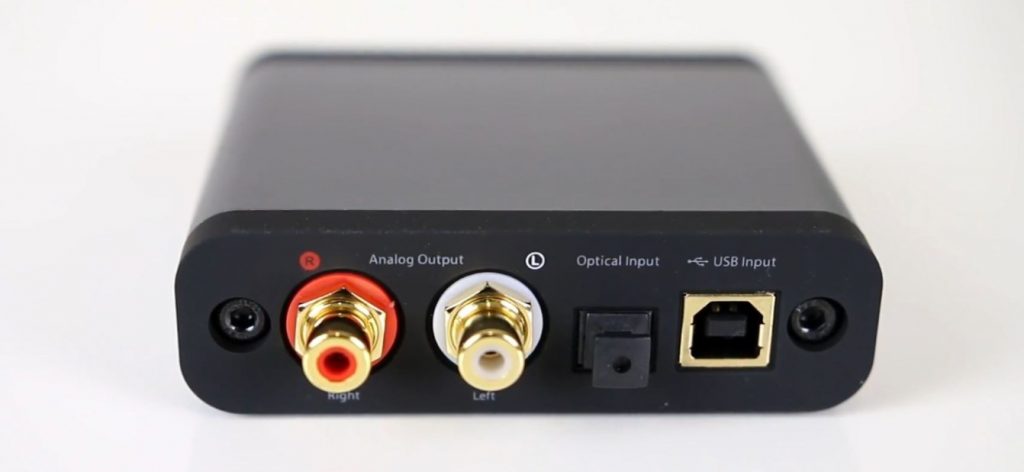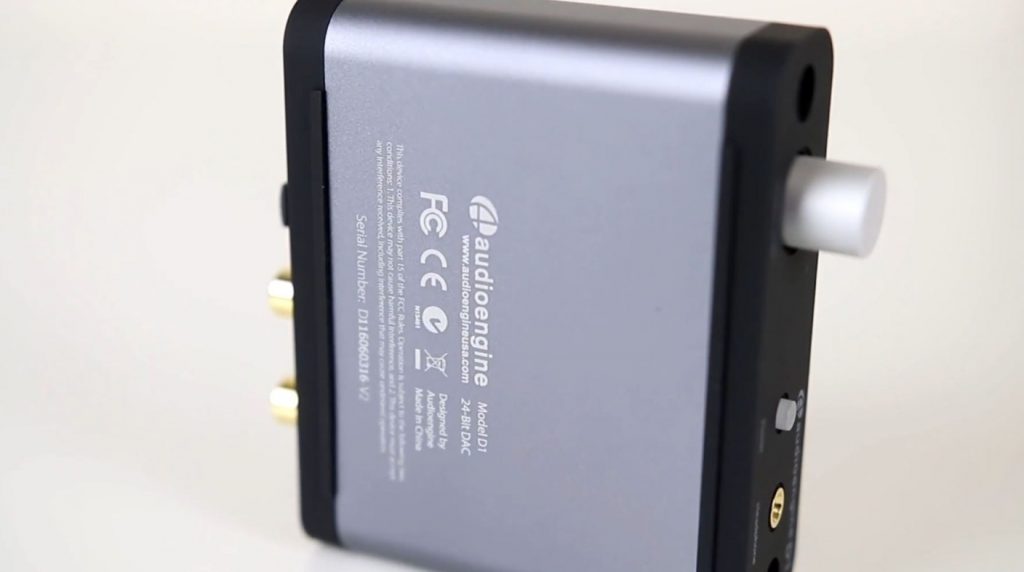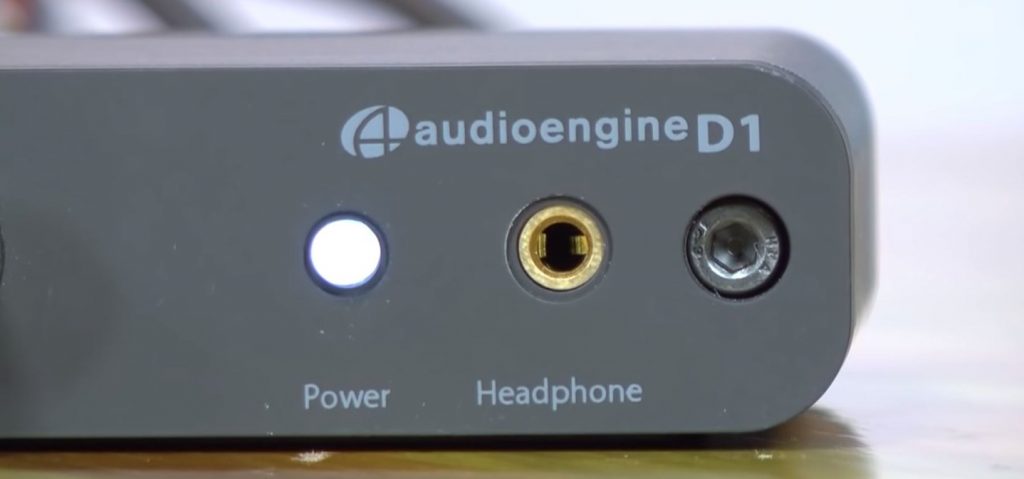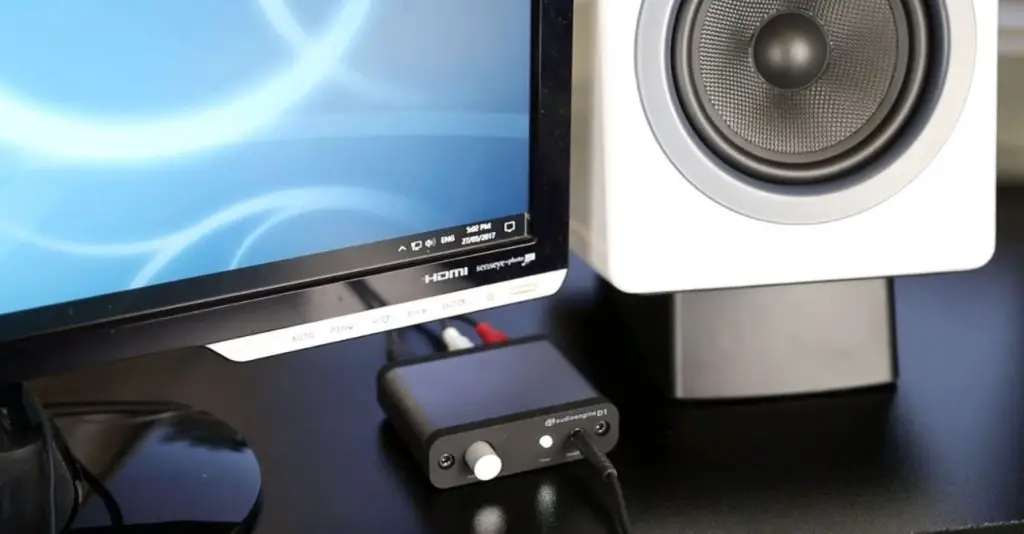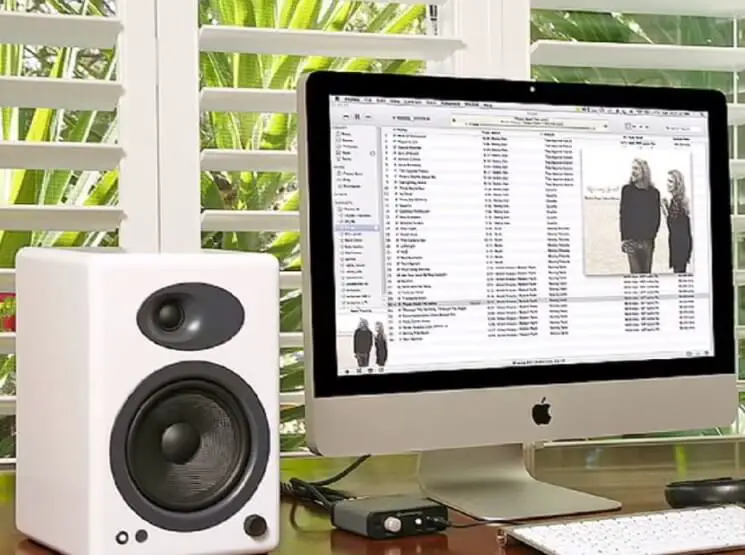Audioengine D1 review
USB decoders are very common, but the ones that do well are rare. Today we bring you Audioengine D1, a small, portable and practical decoder with USB/optical input and support 24bit audio decoding, which is very suitable for laptop users.
Audioengine is a professional audio equipment brand with a high reputation in Europe and America. Its products have better quality assurance, but the appearance design and the fineness of artistry are beyond ordinary brands’ reach.
Design
Audioengine not only has relatively good sound quality, but it is also very prominent in the modernity of the product design and the exquisite artistry. This pocket-sized decoder, Audioengine D1 DAC, still has Audioengine’s unique sense of sophistication. It uses a dark gray finish and looks not too fancy. The excellent artistry still reflects the brand’s quality.
The Audioengine D1 24-bit digital-to-analog converter decoder packaging is simple and straightforward, and the yellow and black color scheme is very industrial design. The product supports 24-bit audio decoding, which can meet the needs of lossless music. The decoding chip used in this product is AK4396.
Audioengine D1 DAC is relatively small. The size is 8.89*10.16*2.54CM, which is larger than a business card. The whole is made of metal material, and the frosted surface makes it look relatively low-key and restrained. D1 is directly powered by USB, which is very convenient.
The left side of the front is the volume knob, and the middle is the power button. This power button can also serve as a light indicator. The red interface on the right is a 3.5mm headphone jack. From left to right on the back of the interface are two RCA output interfaces, an optical input interface, and a USB input port.
The front and rear edges of Audioengine D1 are matched with black metal rubber rings. From the bottom, it can be seen that there are two long footpads on the rubber ring to prevent scratches on the base plate and make the placement more stable.
Internal Circuit
D1 has an amplifier circuit, and its earphone op-amp uses OPA2134, which is more suitable for driving some low-impedance earphones. So we connect it to a computer and use it as a decoding amp. Besides, from the decoder’s back, we can see that it also has an analog output interface of RCA so that it can be connected to a desktop amp and power amplifier system or directly connected to other audio sources.
From the decoder’s back, we can also see that Audioengine D1 has two input modes: USB and optical fiber. Its USB chip uses Texas Instruments TAS102B, and its decoder chip is AK4396. Audioengine D1’s USB power supply, a two-stage power filtering/correction, makes the power supply very stable, and the distortion and noise floor are also very low. This USB receiving chip supports asynchronous transmission, which can significantly reduce jitter and overcome the defect of poor sound quality in USB transmission.
However, we need to note that Audioengine D1 24-bit DAC only supports USB1.1, supporting up to 24Bit/96KHz input capability. However, 24bit/192KHz audio can be achieved using optical fiber, and the performance will be better. This decoder does not have any switching buttons. When inputting in different ways, it will automatically switch to the corresponding mode, bringing maximum simplicity to users.
If the Audioengine D1 is connected to the optical fiber and the USB interface on the computer simultaneously, D1 can automatically determine the input signal. The priority of the optical fiber is higher than that of the USB. When the optical input is used, the USB interface only supplies power.
In the same way, at the output end, 3.5mm has a higher priority than RCA. When the earphone is plugged in, the RCA output will be muted and automatically restored after being unplugged. These are fully considered in the product design stage, so various switch switches are not so needed.
Performance with Laptop
As a decoder designed for convenience and improved sound quality, Audioengine D1 may be suitable for use with a notebook at any time, and it can be used by connecting the USB cable with the MacBook Air laptop.
There are two ways to connect the D1 and the laptop: 1. You can use a USB data cable to connect to the computer as a USB decoder, which is equivalent to an external sound card. This connection method is more suitable for notebook computers, which do not have optical fiber output, and USB supports up to 24bit / 96 KHz sampling rate. 2. You can use the optical input to connect the PC sound card to the D1 for decoding and then output to the speakers. The optical fiber can reach a sampling rate of 24bit / 192 KHz.
It is worth mentioning that when Audioengine D1 is connected to Windows and Mac systems, it can be used directly without installing drivers. After we connect in Win7, the system will automatically use D1 as the default audio device. In the Foobar software, we need to change the output device to Audioengine D1 in the settings.
Sound Performance
First of all, let’s try listening with a relatively low-impedance earphone, the Hifiman RE-600. HiFiman RE-600 is a relatively easy-to-drive earbud. This earbud’s sound performance is neutral, and the tone is warm, which is loved by many enthusiasts. It can get a good sound by driving it directly.
After using the Audioengine D1 to connect to the RE-600, we still found that it can get the loudness required for regular listening by just turning on the low volume. D1 describes the sound details very delicately and in place, and the sound is fully turned on. It seems that driving this easy-to-drive headset product, D1 does not have any pressure. But D1 also allows us to feel its unique sound style. A modification of the sound can more satisfy people’s needs for good warmth and bass.
We then used HD600 headphones to test the D1. This classic earphone is very familiar to many enthusiasts. HD600 is not a particularly difficult-to-drive headphone. We feel that the gain of D1 is not too big, and we need to turn the volume to over 50% to access the standard listening volume. But when listening, I found that D1 drives the HD600 better. There is no bottleneck in the performance of the HD600 in the sound field, and there is no tightness, and the details can be fully displayed.
The sound performance can be said to be quite satisfactory. The sound of D1 shows a more modern feel. It can render the overall sense of hearing a bit more intense, the performance of the bass volume is sufficient, and the diving ability is also more acceptable. The overall sound is delicate and smooth, and the control ability is relatively appropriate, giving us a somewhat satisfactory answer.
The HD600’s bass is abundant in volume and has an improvement in diving ability, and the quality change is more prominent. The headset’s overall delicacy has also been significantly changed, and the sound of D1 itself has a good sound density. Its sound background is relatively clean, and the sound is biased towards warm colors. When using such a system collocation, a better sense of hearing can be obtained, and it is easier to exert the strength of the headset.
AudioengineA5+ /D1 Sound Performance
AudioengineA5+ gave me the impression of a more “natural” style speaker. The bass is subtle, the midrange density is appropriate, and the treble is bright but not too sharp. The whole is clean, clear, large sound field, accurate positioning, less rendering, and a little bit of monitor speakers’ smell. The mid-bass sounds a bit cold and rigid. The low volume of A5+ is not much, and it is flexible, but the dive does not seem to be sufficient.
The overall listening experience of Audioengine D1 connected to Audioengine A5+ is that the low frequency is thicker, and the cohesion and impact will be obvious. For A5+’s relatively restrained bass, the lateral sound field’s width seems to be more comprehensive. After connecting to D1, the overall sound of A5+ also looks warmer due to the change in the bass. If the style of A5+ is like Celine Dion, and the style of A5+ connected to D1 is a bit like Adele, I feel that the power contained in the sound is stronger. The combined sound of A5+ and D1 also appears more elastic and dynamic, with better transients.
The changes in the mid-to-high range are similar, with some increase in the mid-to-high range. However, the general DAC method of increasing the brightness of the treble is different. D1 increases the sound’s density, and the brightness does not increase significantly, but it is a lot more gentle and comfortable. Listening to human voices seems more natural and full, not exaggerated, and very durable. Another feature of the sound after D1 is connected is that the resolution is much higher than that of a computer sound card, and more details can be heard.
When using a USB interface to connect to a computer, although the 96Khz sampling rate is not as high as an optical fiber, it is sufficient to meet most lossless music files’ sampling and playback requirements. It sounds almost the same as using optical fiber input. It is a process of warming and thickening the overall sound. Although the mid-to-treble stimulus is not improved, the transient and analytical improvement and the treble’s delicate changes will make the mid-to-treble sound more textured.
Conclusion
In terms of size and port configuration, Audioengine D1 USB DAC is a special decoder. In terms of size, we can easily regard it as a portable decoder. But if you bundle it with a portable player, you still need it. It is equipped with a USB interface power supply. You can only match a player with an optical output interface, so Audioengine D1 is not a decoder suitable for portable listening.
If you think of D1 as a desktop decoder, the power has some issues driving passive speakers. The power of the headphone amplifier of OPA2134 low-noise operational amplifier used by D1 drives couple hundred impedance headphones, which also seems to make people worry about its power.
Therefore, the best way to use D1 is to pair it with active speakers, such as Audioengine A5+. When connecting to a notebook or a PC with a poorly integrated sound card, D1 is paired with your listening system to bring about the listening experience.
Audioengine D1 Specs
- DAC type: USB and Optical
- Inputs: USB audio/SPDIF Optical
- D/A converter: AKM4396
- USB transfer mode: Asynchronous dual clock
- USB controller: TI1020B
- USB device class: Type 1.1 or above
- Input bit depth: 16 bit, 24 bit
- Input sample rate (USB): 32kHz-96kHz native playback/188.2kHz & 192kHz re-sampled to 96kHz
- Input sample rate (optical): 32kHz-192kHz native playback
- Outputs: Analog RCA L/R stereo/Analog 3.5mm mini-jack stereo
- Full-scale output level: 2.0V RMS
- Output impedance: 2 ohms
- Recommended headphone impedance range: 10 ohms to 600 ohms
- Headphone amplifier: OPA2134
- Optical receiver: CS8416
- Frequency response: 10Hz-25KHz (+/- 0.5dB)
- SNR: (DC to 20 kHz) >110dB
- THD+N: (1kHz FS 96kS/s) <0.0025%
- Crosstalk: -85db
- Input bit depth: 16 bit, 24 bit
- Input sample rate (USB): 32kHz-96kHz native playback/188.2kHz & 192kHz re-sampled to 96kHz
- Input sample rate (optical): 32kHz-192kHz native playback
- Power requirement: USB 5V DC, 200mA
- USB power filtering: 2-stage redundant regulation
- Product dimensions: 3.5×3.75×1″ (89x95x25mm)
- Shipping weight: 1.0lbs (0.5kg)
